Design, Development and Implementation of a Weather Station Prototype for Renewable Energy Systems
Abstract
1. Introduction
2. Materials and Methods
2.1. Definition of Signals and Components
2.2. Control Tasks Modelling
2.3. Prototype 3D Design
2.4. Validation Station
3. Results
3.1. Final State of the Prototype and the Validation Station
3.2. Tests Conducted for Different Weather Variables
3.2.1. Wind Speed
3.2.2. Ambient Temperature
3.2.3. Relative Humidity
3.2.4. Barometric Pressure
4. Discussion
Comparison between Validation Station and Weather Station
5. Conclusions
Author Contributions
Funding
Acknowledgments
Conflicts of Interest
References
- Zhao, X.; Fan, Y.; Fang, M.; Hua, Z. Do environmental regulations undermine energy firm performance? An empirical analysis from China’s stock market. Energy Res. Soc. Sci. 2018, 40, 220–231. [Google Scholar] [CrossRef]
- Bicer, Y.; Dincer, I. Life cycle environmental impact assessments and comparisons of alternative fuels for clean vehicles. Resour. Conserv. Recycl. 2018, 132, 141–157. [Google Scholar] [CrossRef]
- Ramos, A.; Teixeire, C.A.; Rouboa, A. Environmental Analysis of Waste-to-Energy—A Portuguese Case Study. Energies 2018, 11, 535. [Google Scholar] [CrossRef]
- Hsin-Ning, S.; Moaniba, I.M. Does innovation respond to climate change? Empirical evidence from patents and greenhouse gas emissions. Technol. Forecast. Soc. Chang. 2017, 122, 49–62. [Google Scholar]
- Bohelert, B.; Strzepek, K.M.; Grebetsadik, Y.; Swanson, R.; McCluskey, A.; Neumann, J.E.; McFarland, J.; Martinich, J. Climate change impacts and greenhouse gas mitigation effects on U.S. hydropower generation. Appl. Energy 2016, 183, 1511–1519. [Google Scholar] [CrossRef]
- Madruga, E.P.; Bernardon, D.P.; Vieira, R.P.; Pfitscher, L.L. Analysis of transient stability in distribution systems with distributed generation. Int. J. Electr. Power Energy Syst. 2018, 99, 555–565. [Google Scholar] [CrossRef]
- Stritih, U.; Tyagi, V.V.; Stropnik, R.; Paksoy, H.; Haghighat, F.; Joybari, M.M. Integration of passive PCM technologies for net-zero energy buildings. Sustain. Cities Soc. 2018, 41, 286–295. [Google Scholar] [CrossRef]
- Tang, W.-J.; Yang, H.-T. Data Mining and Neural Networks Based Self-Adaptive Protection Strategies for Distribution Systems with DGs and FCLs. Energies 2018, 11, 426. [Google Scholar] [CrossRef]
- Poggi, F.; Firmino, A.; Amado, M. Planning renewable energy in rural areas: Impacts on occupation and land use. Energy 2018, 155, 630–640. [Google Scholar] [CrossRef]
- Anoune, K.; Bouya, M.; Astito, A.; Abdellah, A.B. Sizing methods and optimization techniques for PV-wind based hybrid renewable energy system: A review. Renew. Sustain. Energy Rev. 2018, 93, 652–673. [Google Scholar] [CrossRef]
- Bartolucci, L.; Cordiner, S.; Molune, V.; Rocco, V.; Rossi, J.L. Hybrid renewable energy systems for renewable integration in microgrids: Influence of sizing on performance. Energy 2018, 152, 744–758. [Google Scholar] [CrossRef]
- Geuder, N.; Wolfertstetter, F.; Wilbert, S.; Schuler, D.; Affolter, R.; Kraas, B.; Lupfert, E.; Espinar, B. Screening and flagging of solar irradiation and ancillary meteorological data. Energy Procedia 2015, 69, 1989–1998. [Google Scholar] [CrossRef]
- Agüera, A.; Palomares, J.C.; González, J.J.; Florencias, O. Weather forecasts for microgrid energy management: Review, discussion and recommendations. Appl. Energy 2018, 228, 265–278. [Google Scholar] [CrossRef]
- Devaraju, J.T.; Suhas, K.R.; Mohana, H.K.; Vijaykumar, A.P. Wireless Portable Microcontroller based Weather Monitoring Station. Measurement 2015, 76, 189–200. [Google Scholar] [CrossRef]
- Tian, J.; Wang, Y.; Liang, X.; Wang, G.; Zhang, Y. WA-MAC: A weather adaptive MAC protocol in survivability-heterogeneous wireless sensor networks. Ad Hoc Netw. 2017, 67, 40–52. [Google Scholar] [CrossRef]
- Prazuek, M.; Konecny, J.; Hamel, A.; Hlavica, J. Fuzzy Energy Management of Autonomous Weather Station. IFAC-PapersOnline 2015, 48, 226–229. [Google Scholar]
- Eguía, P.; Alonso, J.M.; Saavedra, A.; Arce, E.; Granada, E. Improving the calibration of building simulation with interpolated weather datasets. Renew. Energy 2018, 122, 608–618. [Google Scholar] [CrossRef]
- Tae-Keun, O.; Lee, D.; Park, M.; Cha, G.; Park, S. Three-Dimensional Visualization Solution to Building-Energy Diagnosis for Energy Feedback. Energies 2018, 11, 1736. [Google Scholar]
- Abbate, S.; Avvenunti, M.; Carturan, L.; Cesarini, D. Deploying a Communicating Automatic Weather Station on an Alpine Glacier. Procedia Comput. Sci. 2013, 19, 1190–1195. [Google Scholar] [CrossRef]
- Machacek, J.Z.; Srovnal, V. Automated System for Data Measuring and Analyses from Embedded Systems. In Proceedings of the 7th WSEAS International Conference on Automatic Control, Modeling and Simulation, Prague, Czech Republic, 13–15 March 2005; pp. 13–15, 43–48. [Google Scholar]
- Rosiek, S.; Batles, F.J. A microcontroller-based data-acquisition system for meteorological station monitoring. Energy Convers. Manag. 2008, 49, 3746–3754. [Google Scholar] [CrossRef]
- Zumuda, G.; Opalinski, A.; Glowaki, M. Mobile monitoring system for environment parameter. Adv. Intell. Syst. Comput. 2018, 655, 252–261. [Google Scholar]
- Laskar, M.R.; Bhattacharjee, R.; Giri, M.S.; Bhattacharya, P. Weather Forecasting Using Arduino Based Cube-Sat. Procedia Comput. Sci. 2016, 89, 320–323. [Google Scholar] [CrossRef]
- Morón, C.; Ferrández, D.; Saiz, P.; Vega, G.; Diaz, J.P. New Prototype of Photovoltaic Solar Tracker Based on Arduino. Energies 2017, 10, 1298. [Google Scholar] [CrossRef]
- Yokoyama, T.; Axelsen, H.B.; Glück, R. Fundamentals of reversible flowchart languages. Theor. Comput. Sci. 2016, 611, 87–115. [Google Scholar] [CrossRef]
- Julius, R.; Schürenberg, M.; Shumacher, F.; Fay, A. Transformation of GRAFCET to PLC code including hierarchical structures. Control Eng. Pract. 2017, 64, 173–194. [Google Scholar] [CrossRef]
- Tan, A.; Changjiang, J. The application of Maze algorithm in translating ladder diagram into instruction list of programmable logical controller. Procedia Eng. 2011, 15, 264–268. [Google Scholar] [CrossRef]
- Barisic, A.; Amaral, V.; Goulao, M. Usability driven DSL development with USE-ME. Comput. Lang. Syst. Struct. 2018, 51, 118–157. [Google Scholar]
- Falck, D.Y.; Colle‘e, B. Freecad [How-To], 1st ed.; Packt Publishing: London, UK, 2012; pp. 1–70. [Google Scholar]
- Camba, J.D.; Contero, M.; Company, P. Parametric CAD modeling: An analysis of strategies for design reusability. Comput. Aided Des. 2016, 74, 18–31. [Google Scholar] [CrossRef]
- Spicer, R.A.; Valdes, P.J.; Spicer, T.E.V.; Craggs, H.J.; Yang, J. New developments in CLAMP: Calibration using global gridded meteorological data. Palaeogeogr. Palaeoclimatol. Palaeoecol. 2009, 283, 91–98. [Google Scholar] [CrossRef]
- Hosseini, M.; Tardy, F.; Lee, B. Cooling and heating energy performance of a building with a variety of roof designs; the effects of future weather data in a cold climate. J. Build. Eng. 2018, 17, 107–114. [Google Scholar] [CrossRef]
- Van Wart, J.; Grassini, P.; Yang, H.; Claessens, L.; Cassman, K.G. Creating long-term weather data from thin air for crop simulation modelling. Agric. For. Meteorol. 2015, 209–210, 49–58. [Google Scholar] [CrossRef]
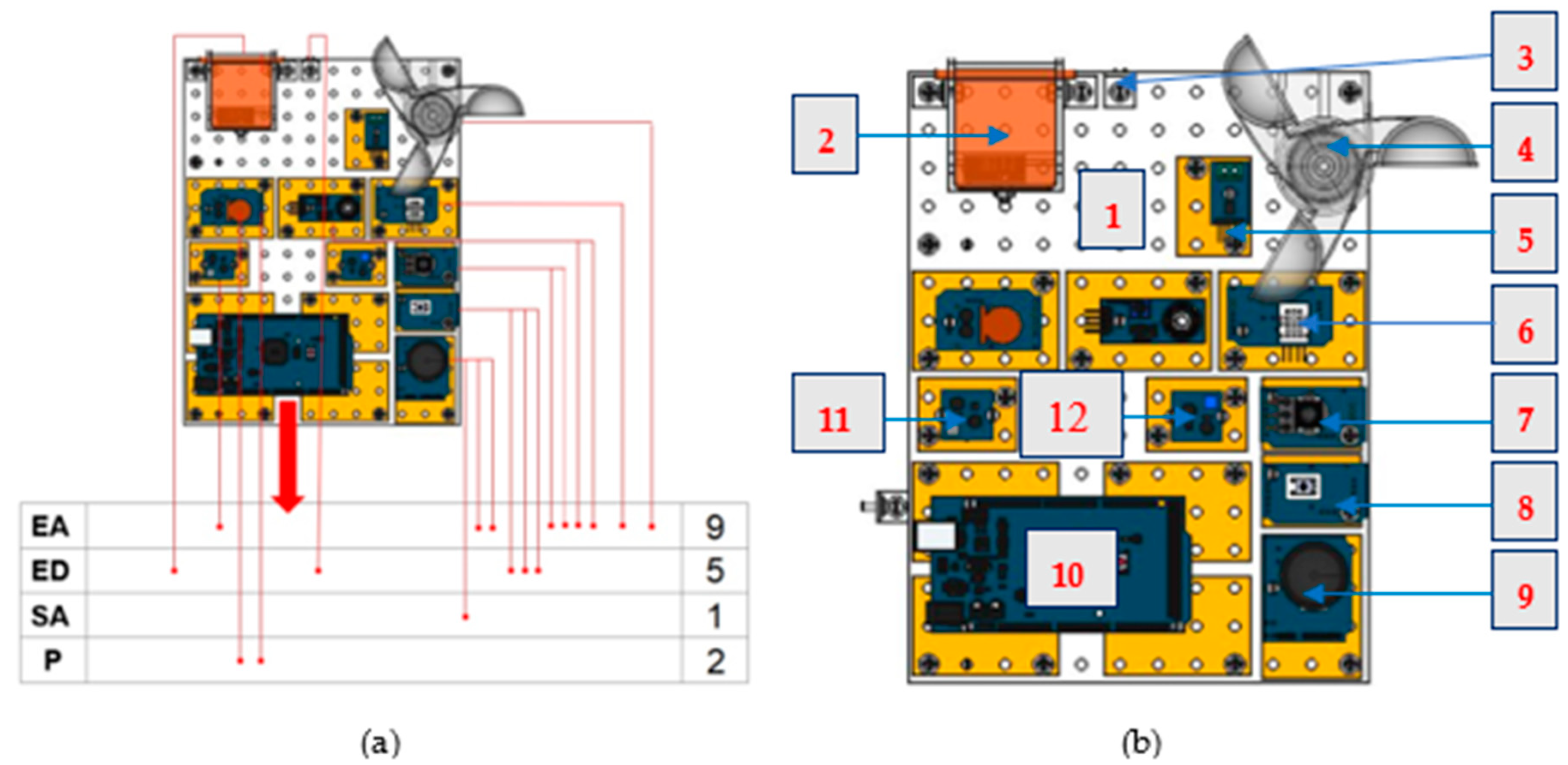
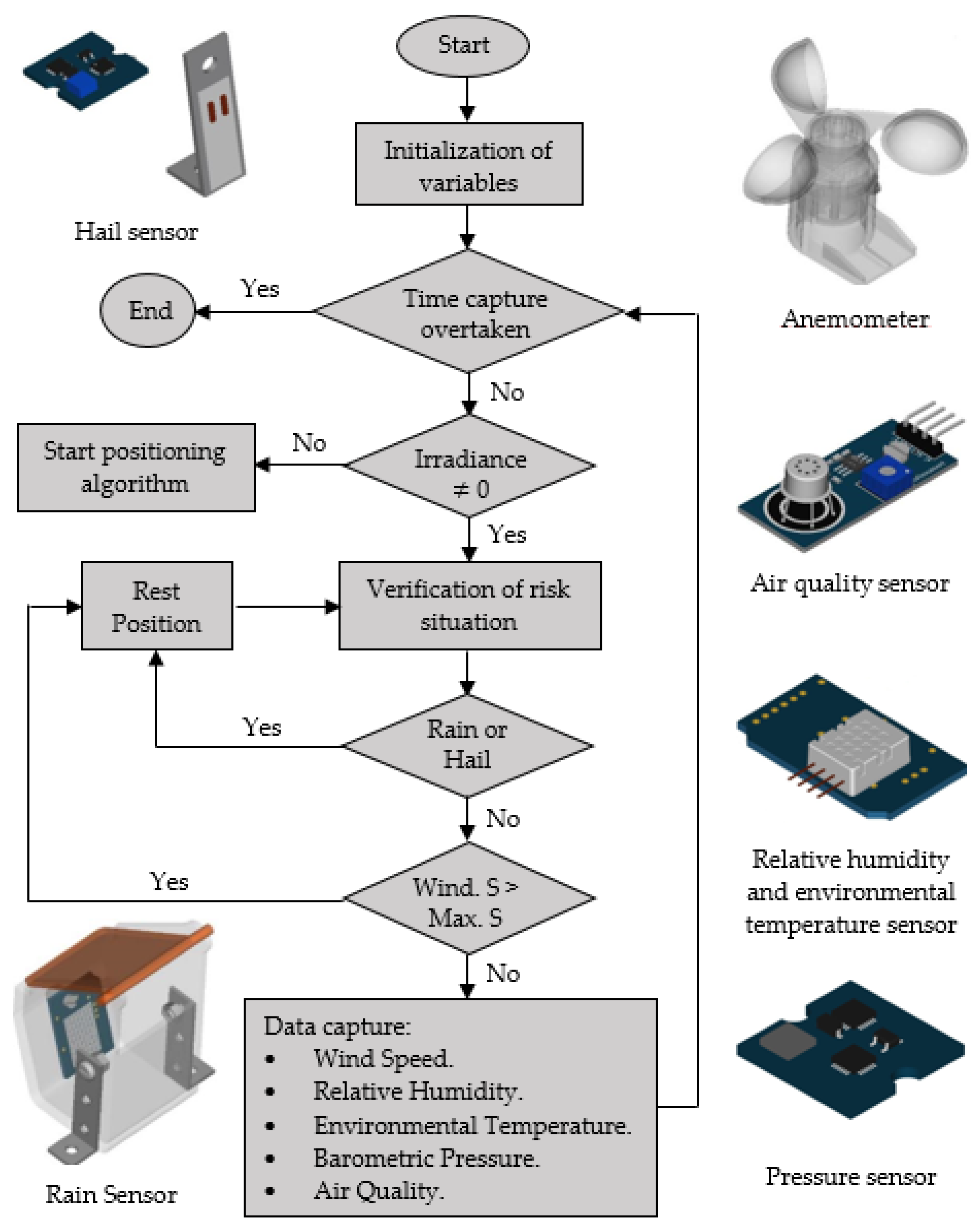
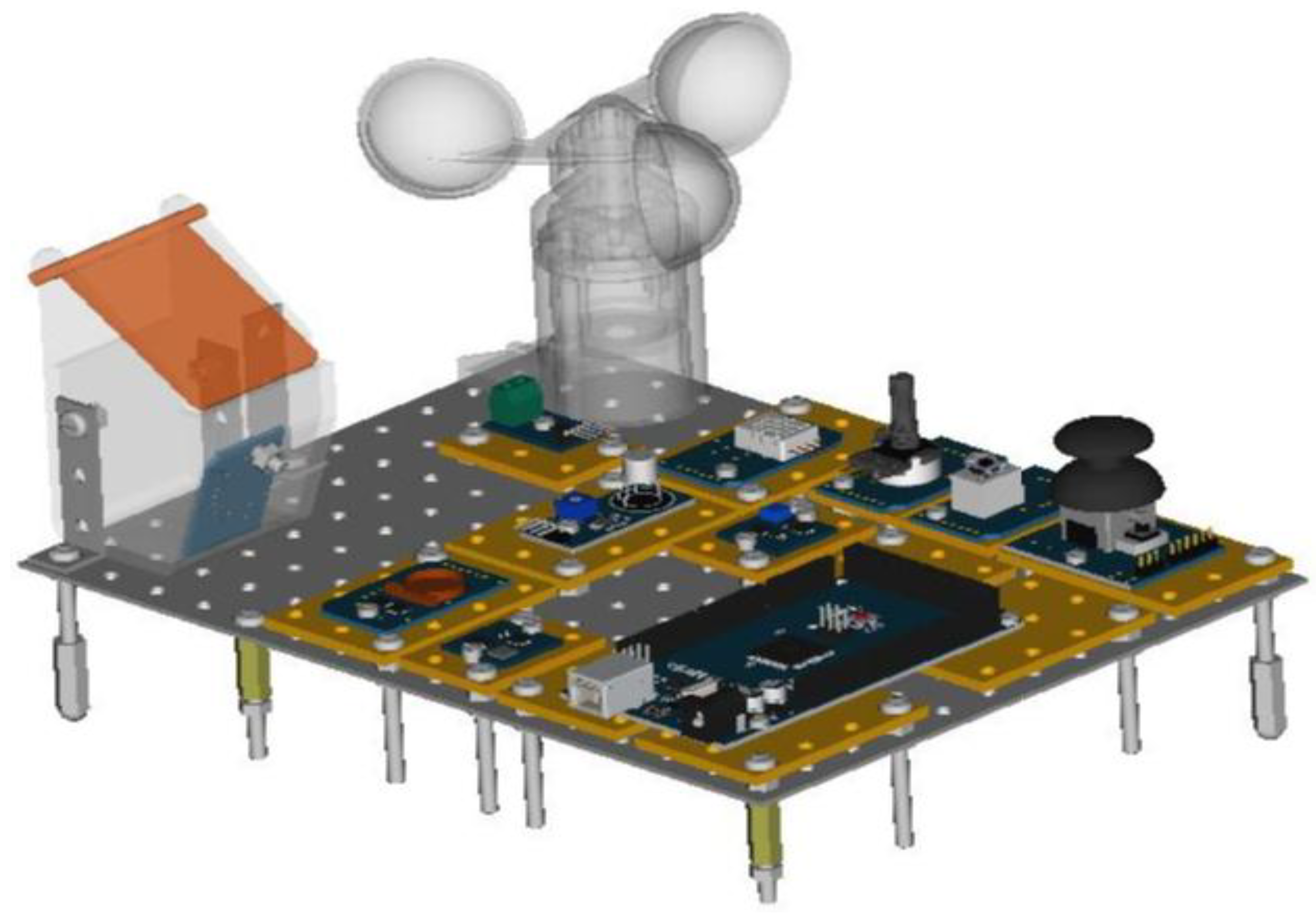
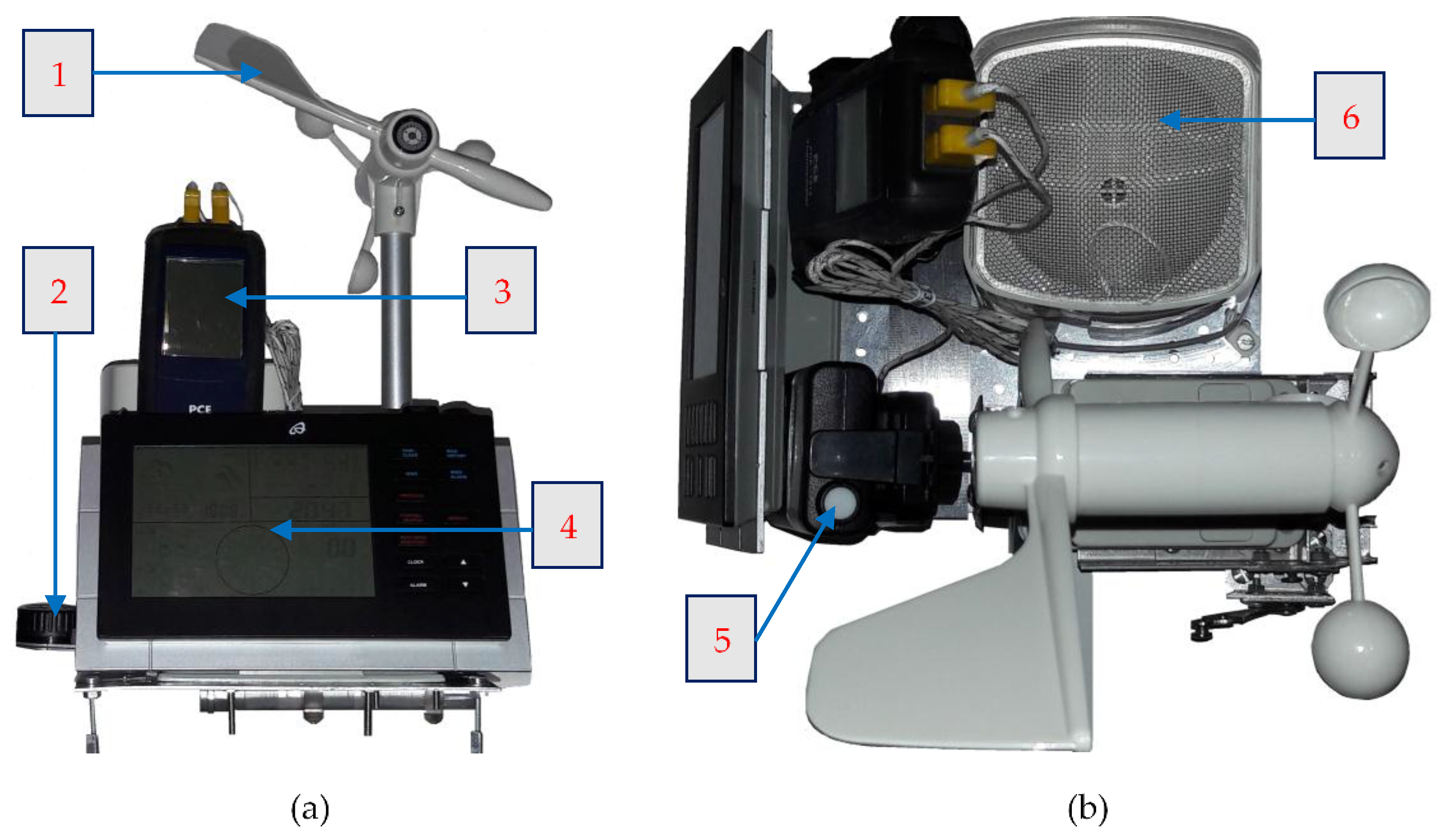


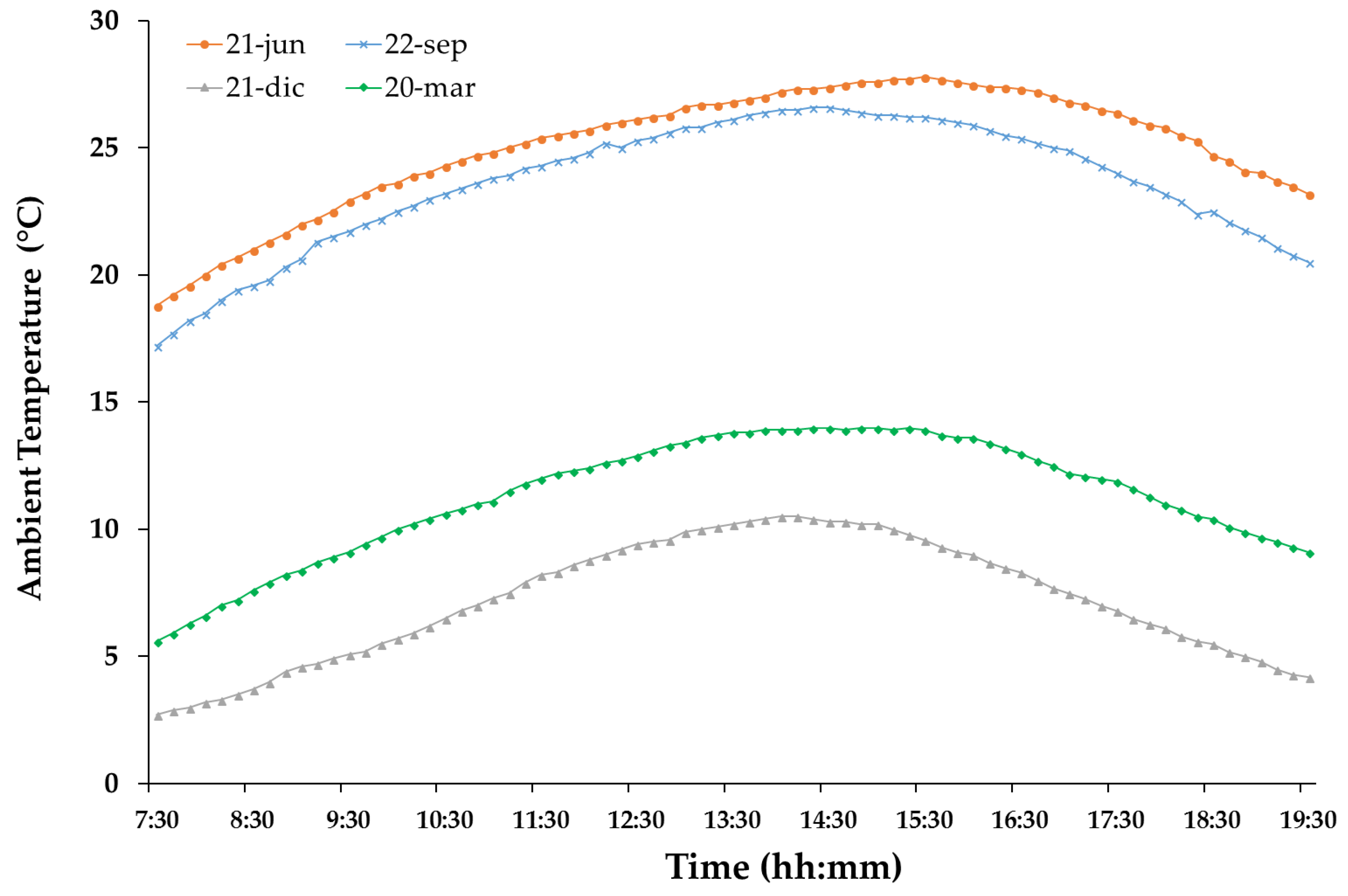


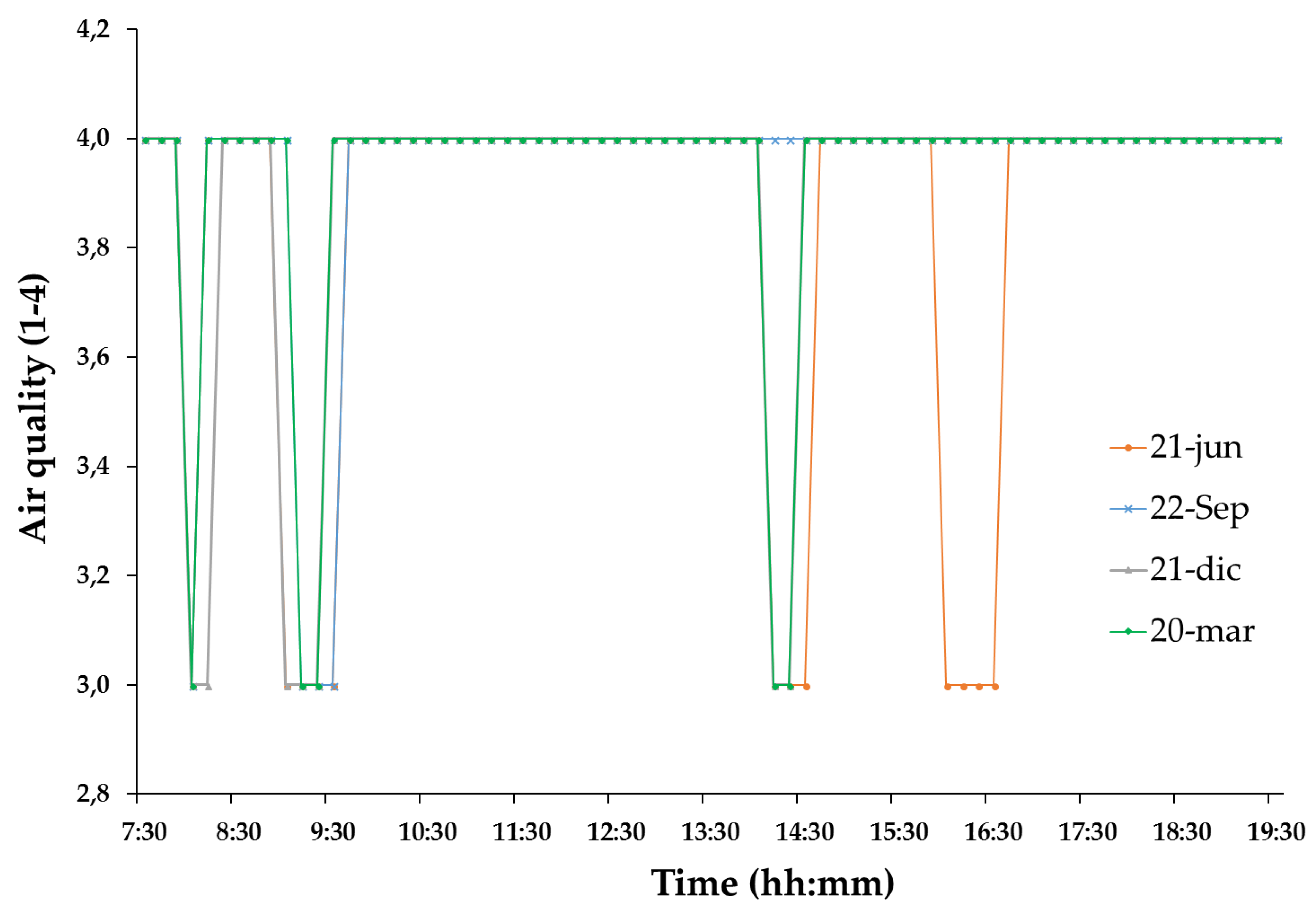
| Component | Description |
|---|---|
| 1 | Aluminium perforated plate, holes diameter 4.2 mm, 15 mm separations. |
| 2 | Water detection sensor SSHU005. Operation at 5.25 V and 20 μA. |
| 3 | Piezoelectric vibration sensor for hail detection PZT LDT0-028. |
| 4 | Anemometer 6710-WINd02. Operation at 5 V, IP44 protection level. |
| 5 | Air quality sensor MQ135. Operation range between 2.25–3.5 V. |
| 6 | Relative humidity and environmental temperature sensor DHT-22. Operation at 6 V and 1.5 mA. |
| 7 | Analogue potentiometer with 300° rotation. Operation between 0 and 5 V. |
| 8 | Commutator ON/OFF in automatic mode for control tasks. |
| 9 | Joystick for manual simulation. Operation between 3.3 and 5 V. |
| 10 | Arduino Mega 2560 ADK Android. Recommended operation voltage 7–12 V, 54 digital pins, 16 analogue inputs, 40 mA, RAM 256 kB memory, Clock speed 16 MHz. |
| 11 | Barometric pressure sensor BMP085. Operation at 5.5 V and 130 μA. |
| 12 | 3-Axis electronic compass HMC5883L. Operation between 3.3 V and 6 V, 116 Hz. |
| Component | Description |
|---|---|
| 1 | Vane and anemometer to measure wind direction and speed (0 km/h to 108 km/h) including integrated sensors of relative humidity and environmental temperature. |
| 2 | Magnetic compass. |
| 3 | Thermometer of two channels, model PCE-T312, with precision of 1 °C. |
| 4 | Weather center for outdoor temperature measure with precision of 0.1 °C, relative humidity with precision of 1% and barometric pressure with precision of 10 mbar. |
| 5 | Irradiance measurer, model PCE-SPM1 with precision of 1 W/m2. |
| 6 | Pluviometer with a measurement range from 0 to 9999 mm. |
| Time (hh:mm) | Wind Speed (m/s) | Ambient Temperature (°C) | Relative Humidity (%) | Barometric Pressure (hPa) | Air Quality | |||||
|---|---|---|---|---|---|---|---|---|---|---|
| Prot. | Val. | Prot. | Val. | Prot. | Val. | Prot. | Val. | Prot. | Val. | |
| 7:30 | 0.9 | 1.0 | 2.7 | 2.5 | 79 | 78 | 946.5 | 902.6 | 4 | 4 |
| 8:30 | 0.5 | 0.5 | 3.7 | 3.4 | 80 | 75 | 946.8 | 903.2 | 4 | 4 |
| 9:30 | 0.0 | 0.0 | 5.1 | 5.1 | 80 | 77 | 947.5 | 976.9 | 4 | 4 |
| 10:30 | 0.6 | 0.6 | 6.5 | 6.2 | 77 | 71 | 947.9 | 941.2 | 4 | 4 |
| 11:30 | 0.4 | 0.4 | 8.2 | 8.4 | 66 | 64 | 947.9 | 942.2 | 4 | 4 |
| 12:30 | 0.3 | 0.3 | 9.4 | 9.0 | 59 | 53 | 947.6 | 945.3 | 4 | 4 |
| 13:30 | 0.7 | 0.7 | 10.2 | 9.6 | 56 | 53 | 947.0 | 943.4 | 4 | 4 |
| 14:30 | 0.6 | 0.6 | 10.3 | 10.5 | 50 | 50 | 945.9 | 912.5 | 4 | 4 |
| 15:30 | 0.7 | 0.7 | 9.6 | 8.7 | 46 | 48 | 946.0 | 933.6 | 4 | 4 |
| 16:30 | 0.4 | 0.4 | 8.3 | 8.9 | 49 | 45 | 946.1 | 952.7 | 4 | 4 |
| 17:30 | 0.0 | 0.1 | 6.8 | 6.5 | 54 | 57 | 946.4 | 958.8 | 4 | 4 |
| 18:30 | 0.0 | 0.0 | 5.5 | 5.4 | 59 | 57 | 946.5 | 951.3 | 4 | 4 |
| 19:30 | 0.5 | 0.5 | 4.2 | 4.0 | 63 | 67 | 946.8 | 960.1 | 4 | 4 |
| Dispersion | 1.54% | 4.78% | 4.28% | 1.75% | 0% | |||||
© 2018 by the authors. Licensee MDPI, Basel, Switzerland. This article is an open access article distributed under the terms and conditions of the Creative Commons Attribution (CC BY) license (http://creativecommons.org/licenses/by/4.0/).
Share and Cite
Morón, C.; Diaz, J.P.; Ferrández, D.; Saiz, P. Design, Development and Implementation of a Weather Station Prototype for Renewable Energy Systems. Energies 2018, 11, 2234. https://doi.org/10.3390/en11092234
Morón C, Diaz JP, Ferrández D, Saiz P. Design, Development and Implementation of a Weather Station Prototype for Renewable Energy Systems. Energies. 2018; 11(9):2234. https://doi.org/10.3390/en11092234
Chicago/Turabian StyleMorón, Carlos, Jorge Pablo Diaz, Daniel Ferrández, and Pablo Saiz. 2018. "Design, Development and Implementation of a Weather Station Prototype for Renewable Energy Systems" Energies 11, no. 9: 2234. https://doi.org/10.3390/en11092234
APA StyleMorón, C., Diaz, J. P., Ferrández, D., & Saiz, P. (2018). Design, Development and Implementation of a Weather Station Prototype for Renewable Energy Systems. Energies, 11(9), 2234. https://doi.org/10.3390/en11092234






